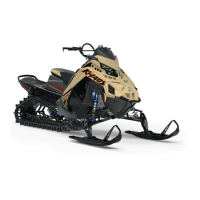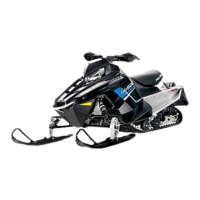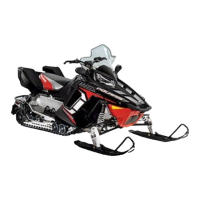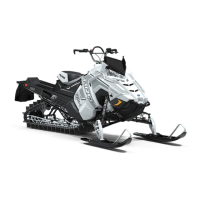11.15
BATTERY & ELECTRICAL SYSTEMS
11
Dynamic Testing
NOTE: Be sure the engine crankshaft turns freely
before proceeding. Use a digital multimeter during
tests.
Static Testing
1. Remove starter motor and disassemble. (See page 11.11
for exploded view) Mark end covers and housing for
proper reassembly.
2. Remove pinion retaining snap ring, spring and pinion gear.
3. Remove brush end bushing dust cover.
4. Remove housing through bolts.
5. Slide brush end frame off end of starter.
NOTE: The electrical input post must stay with the
field coil housing.
6. Slide positive brush springs to the side, pull brushes out of
their guides and remove brush plate.
7. Clean and inspect starter components.
NOTE: Some cleaning solvents may damage the
insulation in the starter. Care should be exercised
when selecting an appropriate solvent. The brushes
must slide freely in their holders. If the commutator
needs cleaning, use only an electrical contact
cleaner and/or a non-metallic grit sandpaper.
Replace brush assembly when worn to 5/16, (.8 cm)
or less.
Starter Housing / Field Coil Testing
1. Using a digital multimeter, measure resistance between
starter input terminal and insulated brushes. The reading
should be.3 ohms or less.
2. Measure resistance between insulated brushes and field coil
housing. The reading should be infinite.
3. Inspect insulated brush wire and field coil insulation for
damage. Repair or replace components as required.
Armature Testing
1. Using a digital multimeter, measure resistance between
each of the segments of the commutator. The reading
should indicate.3 ohms or less.
2. Measure resistance between commutator and armature
shaft. Reading should be infinity.
3. Place armature in a growler. With the growler on, position
a hacksaw blade lengthwise 1/8, (.03 cm) above armature
coil laminates. Rotate armature 360_. If hacksaw blade is
drawn to the armature on any pole, the armature is shorted
and must be replaced.
Test battery voltage. Is the battery voltage equal to or greater than
12.8 Vdc?
NO
Remove battery, test and/or service. Install a fully
charged shop battery to continue the test and continue
with left column
YES
Disconnect two-pin harness from starter solenoid. Connect black
multimeter probe to the engine or ground, then the red probe to the
red harness wire at solenoid. Rotate ignition key to the start
position. Meter should read battery voltage. Does it?
NO
With black tester lead on ground, check for voltage at
large relay terminal, circuit breaker in and out terminals,
and across both sides (red and red/white) of the ignition
switch with switch on start. Repair or replace any
defective parts.
YES
Reconnect the solenoid harness. Connect black probe to battery
positive terminal and red probe to solenoid end of battery to
solenoid cable. (B) Page 13.9. Turn key to start position. The
reading must be less than.1V DC. Is it?
NO Clean battery to solenoid cable ends or replace cable.
YES
Connect black tester lead to solenoid end of solenoid to starter
cable and red tester lead to starter end of same cable. (D) Page
13.9. Turn key to start position. The reading must be less than.1V
DC. Is it?
NO Replace starter solenoid.
YES
Connect black tester lead to starter frame. Connect red tester lead
to battery negative (-) terminal. (E) Page 13.9. Turn key to start
position. The reading should be less than.1V DC. Is it?
NO
Clean ends of engine to battery negative cable or replace
cable.
If all these tests indicate a good condition, yet the starter still fails to turn, or turns slowly, the starter must be remove for static testing
and inspection.
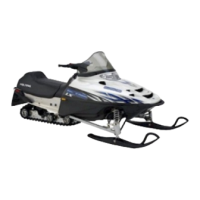
